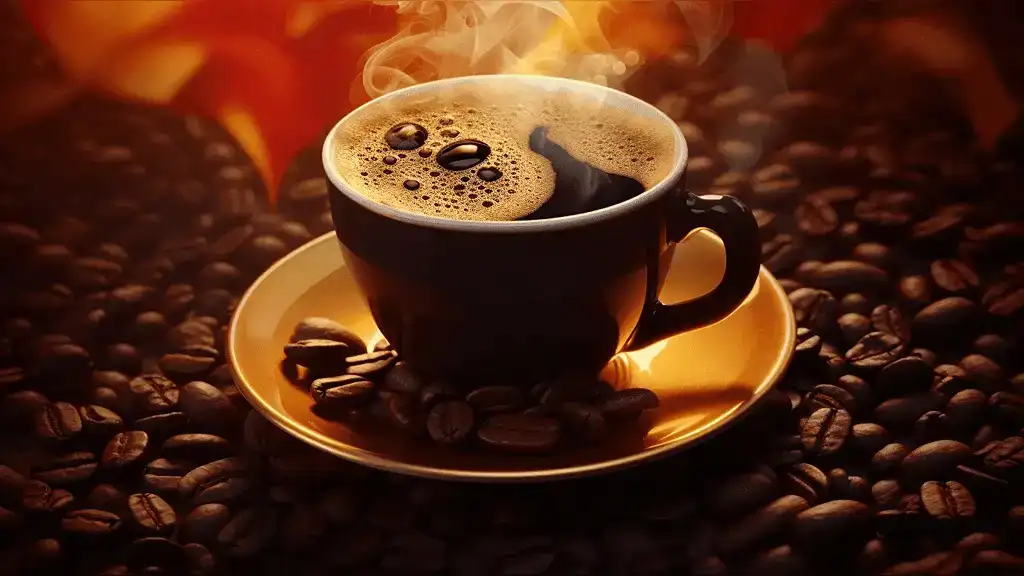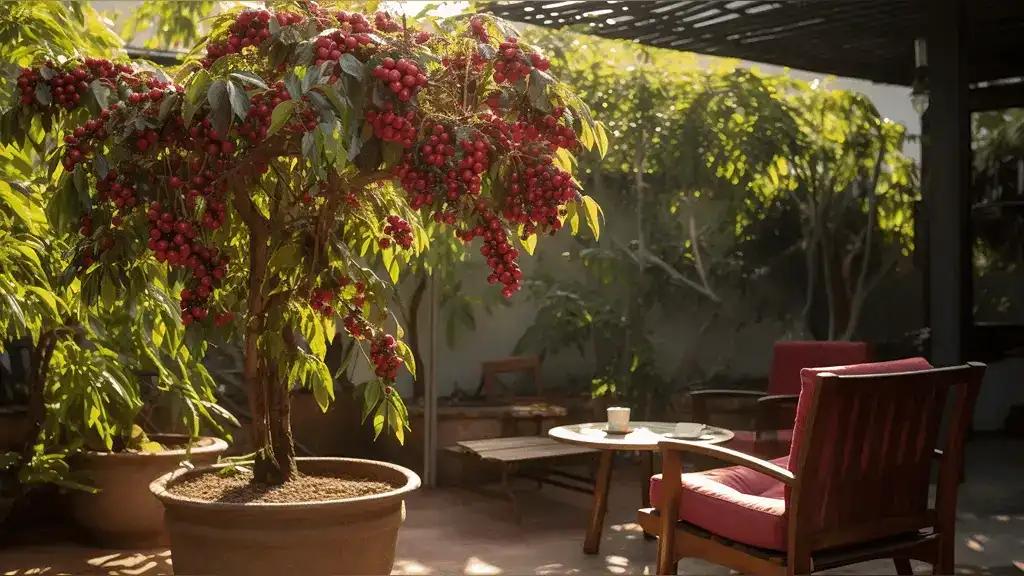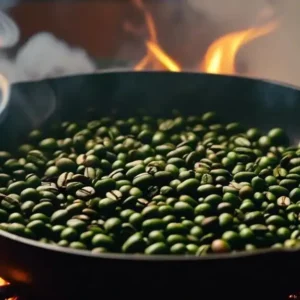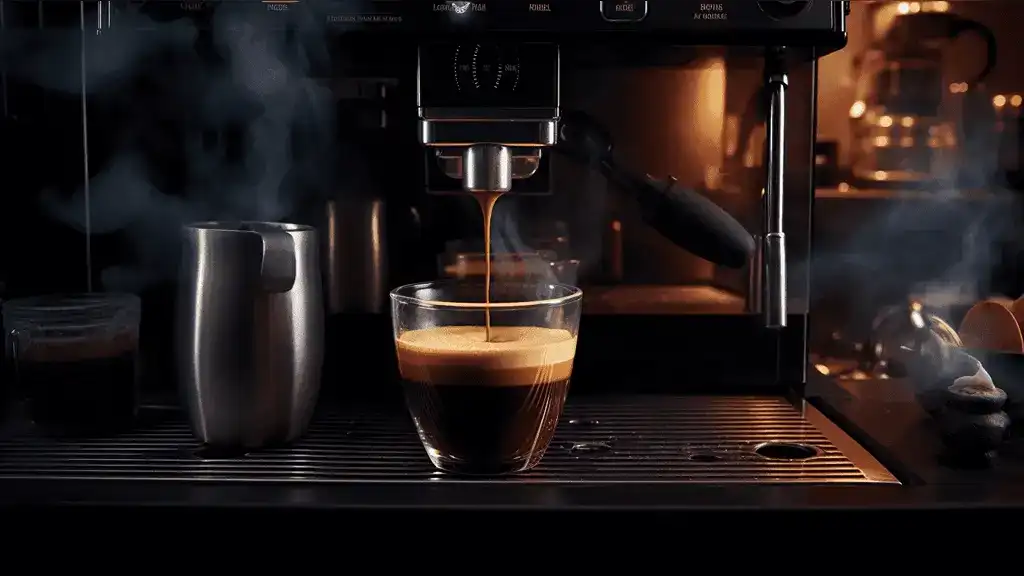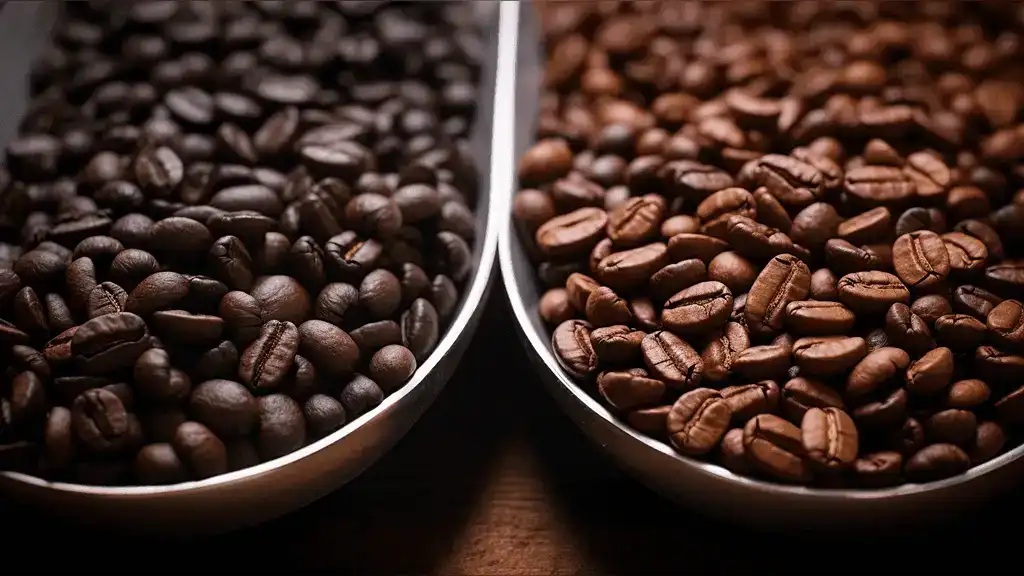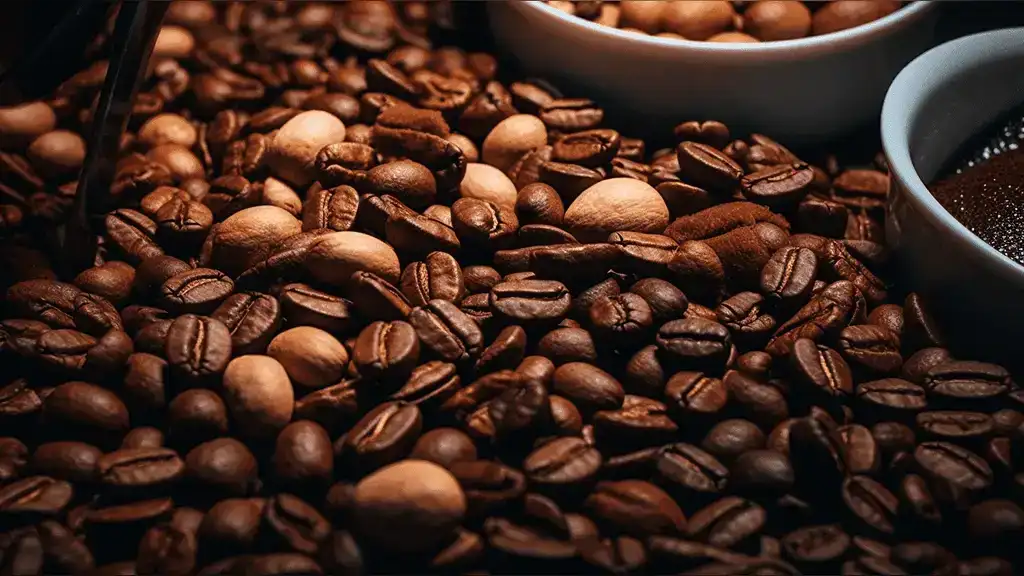Are you curious about the caffeine content in Excelsa coffee?
In this article, we will explore the natural occurrence of caffeine in Excelsa coffee beans and the factors that can affect its levels.
We’ll also discuss the methods used to measure caffeine in Excelsa beans and how different brewing techniques can alter the caffeine content in your cup.
Additionally, we’ll delve into the relationship between caffeine levels and the flavor profile of Excelsa coffee, as well as the potential health benefits and risks associated with its consumption.
Finally, we’ll examine how caffeine content influences consumer preferences and Excelsa’s position in the market.
The Science Behind Caffeine in Excelsa Coffee
If you enjoy Excelsa coffee, you may be curious about the natural occurrence and factors that affect the caffeine levels in its beans.
The caffeine content in coffee beans is a result of various factors, both genetic and environmental. One of the main determinants is the species of coffee plant. Excelsa coffee, which belongs to the Coffea liberica family, has naturally lower caffeine levels compared to other species like Coffea arabica or Coffea robusta.
Speaking of Coffea arabica, have you ever wondered how Excelsa stacks up against it? Delve into the Excelsa vs. Arabica comparison to understand the nuances and distinctions between these two coffee species.
Another important factor is the altitude at which the coffee is grown. Higher altitude coffee tends to have higher caffeine content. This is because the coffee plants at higher altitudes face more stress and produce more caffeine as a defense mechanism against insects and disease.
Additionally, the ripeness of the coffee cherries also affects caffeine levels. Fully ripe cherries have higher caffeine content, while under-ripe or over-ripe cherries may have lower levels.
For those intrigued by the rich tapestry of Excelsa’s past, diving into the Excelsa coffee’s rich history and flavor can provide a deeper appreciation. Discover how the Excelsa coffee journeyed through time, offering a unique blend of history and taste.
Lastly, the processing method used can influence caffeine content. Different processing methods can lead to variation in caffeine levels, as some methods may retain more caffeine than others.
Measuring Caffeine in Excelsa Coffee
The methods and metrics used to measure the caffeine in Excelsa beans vary among different researchers. It’s interesting to see how they approach this task differently.
Here are a few methods and metrics commonly used:
- HPLC (High-Performance Liquid Chromatography): This method involves separating the different compounds in the coffee sample and then measuring the amount of caffeine present. It’s considered one of the most accurate methods.
- UV-Visible Spectrophotometry: This method relies on the absorption of light by caffeine molecules. By measuring the amount of light absorbed, researchers can determine the caffeine content in Excelsa beans.
- Titration: This method involves adding a reagent to the coffee sample that reacts with caffeine. The reaction is then monitored, and the amount of caffeine is calculated based on the amount of reagent used.
- Gas Chromatography: This method separates the different compounds in the coffee sample using a gas as the mobile phase. The caffeine is then detected and quantified using a detector.
These methods and metrics provide valuable insights into the caffeine content of Excelsa beans. By understanding the different approaches used, researchers can compare and analyze the data more effectively, ultimately contributing to a better understanding of Excelsa coffee and its caffeine content.
Factors Influencing Caffeine Content in Excelsa
To better understand the impact of environmental and cultivation factors on caffeine concentration, you can explore how different growing conditions and farming practices influence the final product.
Excelsa coffee, like any other coffee variety, is influenced by various factors that affect its caffeine content. Let’s take a closer look at some of these factors and how they can influence the caffeine concentration in Excelsa beans.
| Environmental Factors | Cultivation Factors |
|---|---|
| Altitude | Soil Composition |
| Climate | Shade |
| Rainfall | Harvesting Method |
The altitude at which the coffee is grown plays a significant role in determining the caffeine content. Generally, coffee grown at higher altitudes tends to have higher caffeine concentrations.
The climate and rainfall patterns in the growing region also impact the caffeine content, as they affect the rate of photosynthesis and nutrient uptake in the coffee plants.
Cultivation factors such as soil composition and shade can also influence the caffeine concentration. Different types of soil can provide varying levels of nutrients to the coffee plants, which in turn affects their caffeine production.
Additionally, coffee plants grown under shade tend to have lower caffeine levels compared to those grown in direct sunlight.
Ever wondered about the distinct differences between Excelsa and other coffee types? Delve into the Liberica vs. Excelsa comparison and uncover the nuances that set them apart. It’s a journey of Excelsa coffee exploration you wouldn’t want to miss.
The harvesting method employed can also impact the caffeine concentration. When coffee cherries are selectively picked at their peak ripeness, the resulting beans are likely to have higher caffeine content compared to beans harvested using mechanical methods.
Brewing Excelsa: Does it Affect Caffeine Levels?
When brewing your cup of Excelsa coffee, it’s important to consider how different brewing methods can impact the amount of caffeine in your final cup. Here are some factors to keep in mind:
- Grind size: The grind size can affect the rate at which the water extracts caffeine from the coffee beans. A finer grind may result in a higher caffeine concentration, while a coarser grind may lead to a lower caffeine content.
- Brew time: The longer you brew your coffee, the more time the water has to extract caffeine from the beans. If you prefer a stronger cup of Excelsa coffee, you may consider extending the brew time.
- Water temperature: Hotter water tends to extract more caffeine from the coffee grounds. However, be careful not to use water that is too hot, as it can result in a bitter taste.
- Coffee-to-water ratio: The amount of coffee grounds you use in proportion to the amount of water can impact the caffeine content. Using more coffee grounds will generally result in a stronger cup of coffee.
By experimenting with these variables, you can customize your brewing process to achieve your desired caffeine content in your cup of Excelsa coffee.
If you’re keen on understanding the geographical aspects of this unique brew, exploring the Excelsa coffee growing zones can be enlightening. Learn how different regions contribute to the distinct flavors of Excelsa coffee.
Happy brewing!
Taste Profile: How Caffeine Influences Flavor
[youtube]https://youtu.be/Nrc2EykjIZE[/youtube]
If you’re curious about the relationship between caffeine levels and the flavor profile of Excelsa coffee, exploring this topic can provide interesting insights.
While caffeine is known for its stimulant properties, it also plays a role in the overall taste experience of coffee. The amount of caffeine in Excelsa coffee can vary depending on various factors, such as the roast level, brewing method, and bean quality.
To better understand the relationship between caffeine levels and flavor in Excelsa coffee, let’s take a closer look at the following table:
| Caffeine Level (mg) | Flavor Profile |
|---|---|
| Low | Subtle, smooth |
| Medium | Balanced |
| High | Bold, robust |
| Very High | Intense |
| Extreme | Overwhelming |
As you can see, the caffeine level in Excelsa coffee can greatly impact its flavor profile. Lower caffeine levels tend to result in a more subtle and smooth taste, while higher levels lead to a bolder and more intense experience.
It’s important to note that personal preference plays a significant role, and what might be considered overwhelming for some, could be the perfect cup for others.
For a sensory experience, understanding what Excelsa tastes like can be a delightful exploration. Dive into the world of Excelsa coffee flavors and discover the symphony of tastes it offers.
So, the next time you enjoy a cup of Excelsa coffee, take a moment to appreciate the unique relationship between caffeine and flavor.
Health Implications of Excelsa’s Caffeine Content
Exploring the health benefits and potential risks of consuming Excelsa coffee’s caffeine can provide valuable insights. When it comes to your daily cup of joe, it’s important to understand how it can affect your overall well-being.
Here are a few things to consider:
- Increased alertness: The caffeine in Excelsa coffee can help improve your focus and concentration, making it an ideal choice for those early mornings or late nights when you need an extra boost.
- Enhanced physical performance: Caffeine has been shown to increase endurance and reduce fatigue, making it a popular choice among athletes. So, if you’re looking to push yourself during a workout or improve your athletic performance, Excelsa coffee might be just what you need.
- Mood booster: Caffeine has been linked to the release of dopamine and serotonin, neurotransmitters that are known to improve mood and promote feelings of happiness. So, that cup of Excelsa coffee in the morning might just put a smile on your face.
- Potential risks: While moderate caffeine consumption is generally considered safe for most individuals, excessive intake can lead to side effects such as anxiety, insomnia, and digestive issues. It’s important to be mindful of your caffeine intake and listen to your body’s signals.
Beyond the caffeine, understanding the remarkable benefits of Excelsa coffee can be an eye-opener. Discover how this unique brew can offer more than just a caffeine kick.
Market Dynamics: Consumer Perception of Caffeine
Now let’s dive into how the caffeine content of Excelsa coffee influences your preferences as a consumer and impacts the market position of Excelsa.
When it comes to coffee, caffeine plays a significant role in determining its appeal to different individuals. Some of you may be drawn to the jolt of energy that caffeine provides, while others may prefer a milder, less stimulating experience.
Excelsa coffee, known for its unique flavor profile, also offers a moderate caffeine content that strikes a balance between these two extremes.
For those who enjoy a boost of energy, Excelsa coffee’s caffeine content can be a selling point. It can help you start your day off on the right foot or give you that extra push during a mid-afternoon slump.
On the other hand, if you’re someone who prefers a more relaxed coffee experience, Excelsa’s moderate caffeine content allows you to savor the flavors without overwhelming your senses.
In terms of market position, Excelsa’s caffeine content caters to a wide range of coffee enthusiasts, making it an attractive option for both the strong coffee lovers and those seeking a more mellow experience.
This versatility gives Excelsa a competitive edge, appealing to a larger consumer base and solidifying its position in the coffee market.
Tracing back to its roots, the origin of Excelsa coffee provides a fascinating tale of its journey. Embark on a historical trip and understand how Excelsa coffee carved its niche.
The Art of Roasting: Caffeine Retention in Excelsa Beans
Let’s take a closer look at how different roasting techniques affect the levels of caffeine in Excelsa beans. When it comes to caffeine content, the roasting process plays a crucial role. Here are a few key points to consider:
- Light Roast: During light roasting, the beans are roasted for a shorter duration, resulting in a lighter and more delicate flavor. This process helps retain a higher level of caffeine, making it a popular choice for those seeking a strong caffeine kick.
- Medium Roast: With medium roasting, the beans are roasted for a moderate duration. This results in a balanced flavor profile, with a slightly lower caffeine content compared to lighter roasts. It’s a great option for those who enjoy a milder, yet still caffeinated, cup of coffee.
- Dark Roast: Dark roasting involves a longer roasting time, which brings out bold flavors and a rich aroma. However, this process leads to a lower caffeine content compared to lighter roasts. If you prefer a robust and full-bodied coffee experience with a lower caffeine kick, dark roast Excelsa beans are a great choice.
- Espresso Roast: Espresso roasting involves a unique technique that produces a concentrated and intense flavor. This process tends to extract more caffeine from the beans, resulting in a higher caffeine content per serving. If you’re looking for a strong and energizing cup of coffee, espresso roast Excelsa beans are the way to go.
For those who love comparisons, the Excelsa vs. Robusta differences can be an enlightening read. Dive deep into the contrasts and similarities between these two coffee giants.
Conclusion
So there you have it, a comprehensive exploration of Excelsa coffee caffeine content.
You now understand the various factors that affect caffeine levels in Excelsa beans, from environmental conditions to brewing methods and roasting techniques.
Additionally, we’ve discussed the relationship between caffeine and flavor, health benefits and risks, and consumer preferences.
Armed with this knowledge, you are well-equipped to make informed decisions about your Excelsa coffee consumption and appreciate its unique qualities in the market.
Enjoy your next cup of Excelsa coffee!
For those who are always on the lookout for more coffee knowledge, comparing Excelsa coffee traits with other varieties can be an enlightening experience. Discover the unique characteristics that make Excelsa coffee stand out in the vast world of coffee.






